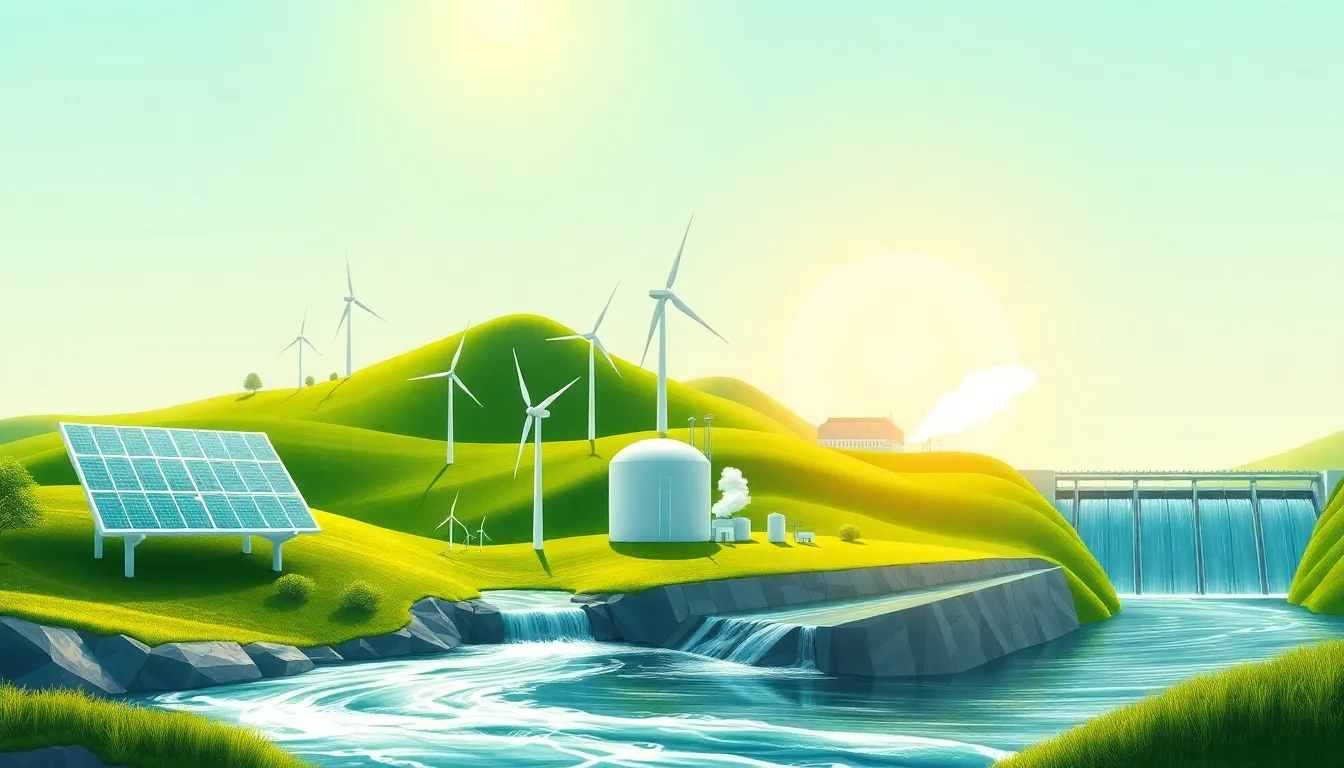Imagine a world where your electricity bill is zero and the air is fresh. Sounds like a dream, right? Well, with emerging technologies in renewable energy, that dream is inching closer to reality. In today’s article, we’ll explore how innovations are transforming our approach to energy, making it not just sustainable, but downright exciting. Buckle up, because renewable energy is about to take you on a wild ride.
Table of Contents
ToggleOverview Of Renewable Energy Technologies

Renewable energy technologies harness naturally replenishing resources, making them pivotal in the current energy landscape. From solar panels capturing sunlight to wind turbines spinning in the breeze, these technologies are changing the game. Geothermal energy taps into the Earth’s heat, while hydroelectric power harnesses the flow of water. Together, they contribute significantly to reducing reliance on fossil fuels and combatting climate change. Each technology presents unique benefits and challenges, yet they share a common goal: using Earth’s resources to create clean, sustainable energy.
Importance Of Renewable Energy
The importance of renewable energy cannot be overstated. As environmental concerns escalate, pivoting to renewable sources is crucial for safeguarding the planet’s future. Not only does renewable energy reduce greenhouse gas emissions, but it also promotes energy independence. Countries can harness local resources, think wind in Texas or solar in Arizona, minimizing reliance on imported fossil fuels. Also, the renewable energy sector is a job powerhouse, offering employment in manufacturing, installation, and maintenance. Embracing renewable technologies is not merely a choice: it’s a necessary step toward a sustainable future.
Key Emerging Technologies
The future of renewable energy looks bright, fueled by some astounding innovations. Let’s dive deeper into key areas making waves in the industry.
Innovations In Solar Energy
Solar energy has taken a giant leap forward with the advent of bifacial solar panels. Unlike traditional panels, these gems can capture sunlight from both sides, enhancing efficiency significantly. Research also highlights the development of perovskite solar cells, which promise lower costs and higher efficiencies compared to their silicon counterparts. Imagine roofs generating power without taking up extra space.
Advancements In Wind Energy
Wind energy technology is also on the upswing. Turbines are growing taller, boasting larger blades that capture more wind energy than ever. Innovations in floating turbine technology allow for wind farms to be built far offshore, where winds are consistently stronger. This means harnessing power from areas previously thought inaccessible.
Breakthroughs In Energy Storage
Energy storage has often been the Achilles’ heel of renewable energy. But, advancements in battery technology, particularly lithium-sulfur batteries, can potentially triple energy density. This improvement allows for better storage solutions, enabling renewable energy to be used even when the sun isn’t shining, or the wind isn’t blowing.
The Role Of Smart Grids And IoT
Smart grids are revolutionizing how energy is distributed and consumed. By integrating Internet of Things (IoT) technology, these grids create a more efficient and responsive energy system. Smart meters provide real-time data on energy usage, allowing for better demand forecasting and balancing. Also, they enable seamless integration of renewable energy sources into the existing grid, ensuring stability and reliability. This not only optimizes resource use but also empowers consumers, giving them the tools to manage their energy consumption effectively.
Challenges And Opportunities
Like any exciting frontier, the renewable energy sector faces challenges. Intermittency in sources, such as solar and wind, poses hurdles for consistent energy supply. But, each challenge offers opportunities for innovation. Developing advanced energy storage solutions can mitigate these issues, ensuring a steady supply even in unpredictable weather. Governments and private sectors are in a race to innovate, potentially leading to increased funding for research and development.
Policy frameworks also play a significant role: favorable regulations can spur innovation, encouraging companies to take risks and explore new emerging technologies.
Future Trends In Renewable Energy Technologies
The renewable energy landscape is poised for several transformative trends. First, the growing integration of artificial intelligence will help optimize energy management and predictive maintenance for renewable resources. Also, we can expect to see advancements in hydrogen fuel cells offering cleaner alternatives in transportation and industrial processes.
Also, the rise of community solar projects empowers individuals and businesses to invest in renewable energy without the need for rooftop installations. This democratizes access and showcases how collaboration can increase renewable energy uptake significantly.







